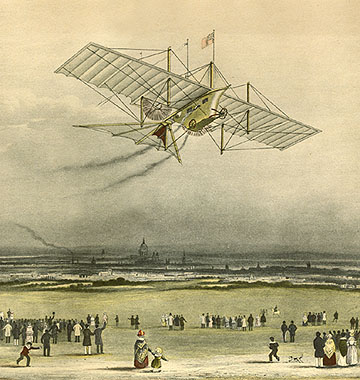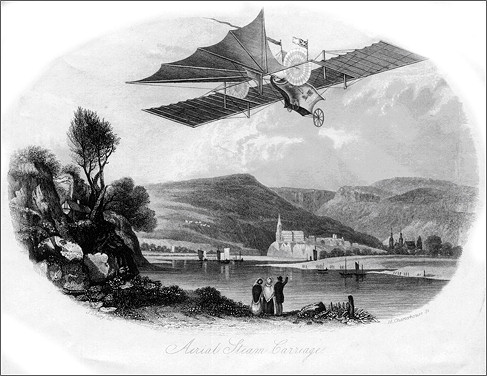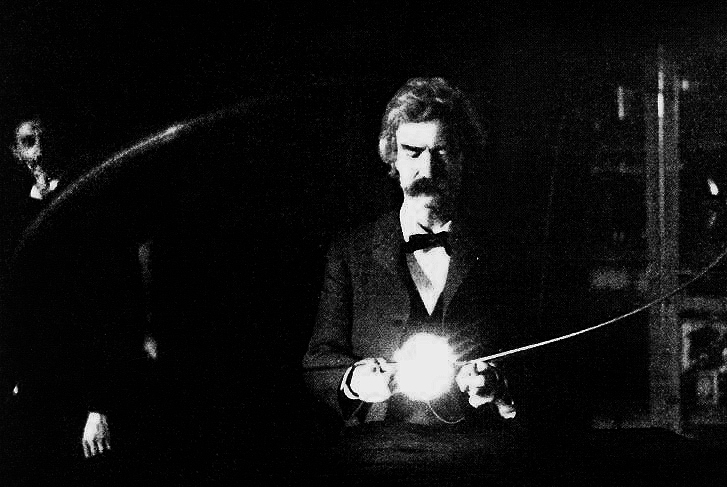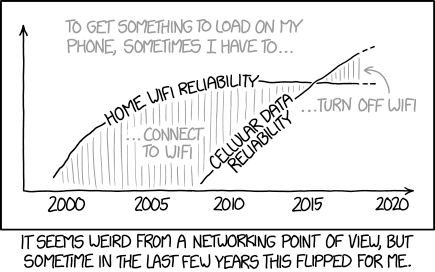This New York Times piece ["Tesla the Car Is a Household Name. Long Ago, So Was Nikola Tesla".
By John F. Wasik DEC. 30, 2017 ] is so bad it might actually be more useful than a better written article (such as this Smithsonian
profile) would have been. Wasik provides us with an excellent example of the way writers distort and mythologize the history of technology in the service of cherished conventional narratives.
The standard tech narrative is one of great men leading us into a period of extraordinary, unprecedented progress, sometimes exciting, sometimes frightening, but always unimaginably big and just around the corner. In order to maintain this narrative, the magnitude and imminence of the recent advances is consistently overstated while the technological accomplishments and sophistication of the past is systematically understated. Credit for those advances that did happen is assigned to a handful of visionaries, many of the tragic, ahead-of-their-time variety.
These historical retcons tend to collapse quickly when held up against actual history. This is especially true here. Tesla always generated a great deal of sensationalistic coverage (more often than not intentionally), but more sober contemporary sources consistently viewed him as both a brilliant and important innovator and also an often flaky and grandiose figure, a characterization that holds up well to this day. This was the man who invented the induction motor; he was also the guy who claimed to hear interplanetary radio messages in his lab.
John F. Wasik plays the ahead-of-their-time card extensively throughout the article.
He envisioned a system that could transmit not only radio but also electricity across the globe. After successful experiments in Colorado Springs in 1899, Tesla began building what he called a global “World System” near Shoreham on Long Island, hoping to power vehicles, boats and aircraft wirelessly. Ultimately, he expected that anything that needed electricity would get it from the air much as we receive transmitted data, sound and images on smartphones. But he ran out of money, and J. P. Morgan Jr., who had provided financing, turned off the spigot.
…
Tesla’s ambitions outstripped his financing. He didn’t focus on radio as a stand-alone technology. Instead, he conceived of entire systems, even if they were decades ahead of the time and not financially feasible.
Tesla failed to fully collaborate with well-capitalized industrial entities after World War I. His supreme abilities to conceptualize and create entire systems weren’t enough for business success. He didn’t manage to build successful alliances with those who could finance, build and scale up his creations.
Tesla’s achievements were awesome but incomplete. He created the A.C. energy system and the basics of radio communication and robotics but wasn’t able to bring them all to fruition. His life shows that even for a brilliant inventor, innovation doesn’t happen in a vacuum. It requires a broad spectrum of talents and skills. And lots of capital.
The trouble with this part of the narrative is that Tesla's Great White Whale (long-distance wireless power transmission) was simply a bad idea. It was not financially feasible because it was not feasible period. We've had over a century to consider the problem, not to mention more powerful tools and a far greater understanding of the underlying physical forces, and we can say with near absolute confidence that, even if long-distance wireless power transmission is developed in the future, it will not use Tesla's approach. No amount of funding, no degree of public support would have changed the outcome of this part of the story.
Just to be clear, even bad ideas can require brilliant engineering. That was certainly the case here, just as it was with other dead ends of the era such as mechanical televisions and steam powered aircraft. Even to this day, demonstrations of Tesla's system are impressive to watch.
[Tesla understood the value of celebrity.]
Just as the if-only-he'd-had-the-money argument collapses under scrutiny, so does the lone-visionary-ahead-of-his-time narrative. If you dig through contemporary accounts, you'll find that Tesla was very much representative of the scientific and research community of his time in most ways. Both in terms of the work he was doing and the ideas he was formulating about the role of technology, he had lots of company.
Wasik consistently downplayed the work of Tesla's contemporaries, sometimes subtly (saying that the Supreme Court ruled in his favor in a 1943 patent dispute when in fact, he was one of three inventors who had their prior patents restored by the decision), sometimes in a comically over-the-top fashion as with this description of Tesla's remote-controlled torpedo.
Shortly after filing a patent application in 1897 for radio circuitry, Tesla built and demonstrated a wireless, robotic boat at the old Madison Square Garden in 1898 and, again, in Chicago at the Auditorium Theater the next year. These were the first public demonstrations of a remote-controlled drone.
An innovation in the boat’s circuitry — his “logic gate” — became an essential steppingstone to semiconductors. [This is a somewhat controversial claim. We'll try to come back to this later – MP]
Tesla’s tub-shaped, radio-controlled craft heralded the birth of what he called a “teleautomaton”; later, the world would settle on the word robot. We can see his influence in devices ranging from “smart” speakers like Amazon’s Echo to missile-firing drone aircraft.
Tesla proposed the development of torpedoes well before World War I. These weapons eventually emerged in another form — launched from submarines.
Just to be clear, Tesla was doing important and impressive work, but as one of a number of researchers pushing the boundaries of the field of radio.
From
Wikipedia:
In 1894, the first example of wirelessly controlling at a distance was during a demonstration by the British physicist Oliver Lodge, in which he made use of a Branly's coherer to make a mirror galvanometer move a beam of light when an electromagnetic wave was artificially generated. This was further refined by radio innovators Guglielmo Marconi and William Preece, at a demonstration that took place on December 12, 1896, at Toynbee Hall in London, in which they made a bell ring by pushing a button in a box that was not connected by any wires. In 1898 Nikola Tesla filed his patent, U.S. Patent 613,809, named Method of an Apparatus for Controlling Mechanism of Moving Vehicle or Vehicles, which he publicly demonstrated by radio-controlling a boat during an electrical exhibition at Madison Square Garden. Tesla called his boat a "teleautomaton"
The part about proposing the "development of torpedoes well before World War I" is even stranger. The
self-propelled torpedo had been in service for more than 30 years by 1898, and
remote-controlled torpedoes (using a mechanical system based on trailing cables, but still having considerable range and speed) had been in use for over 20.
It makes for a good story to credit Tesla as the lone visionary who came up with robotics and remote control by himself but was just too far ahead of his time to sell the world on that vision, but the truth is that lots of smart people were working along these lines (like
Leonardo Torres y Quevedo) and pretty much everybody saw the potential value.
Tesla's ideas about remote-controlled torpedoes would take years to be implemented because it would take years for the technology to catch up with his rhetoric. You can read a very good contemporary account from scientific American that spelled out the issues.
We've talked a lot here at the blog about about the mythologizing and bullshit that are pervasive in the 21st century technology narrative. It's worth noting that those same popular but dangerously false narratives color our perception of the past as well.











